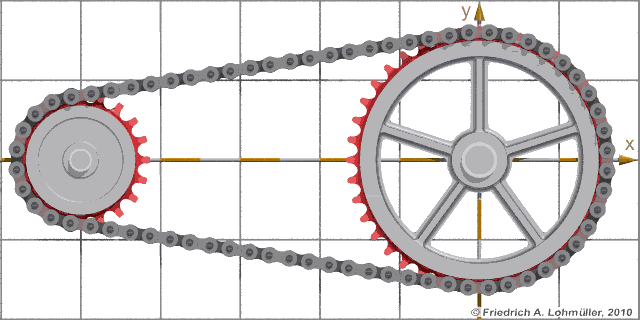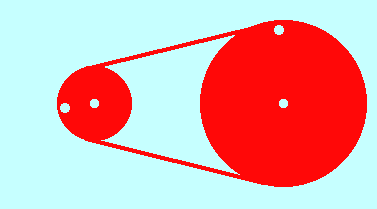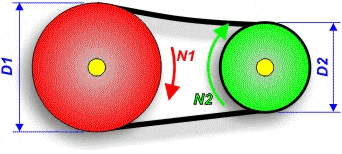⇸Transferring rotary force from an input location to another location.
⇸Changing the rotary speed by using rotating elements of different sizes.



These mechanisms keep the same speed ratios, but each one offers a different advantage.
⟶ CHANGES IN SPEED
♦ To increase the speed of a rotary system, we must transmit motion from a larger element to a smaller element, but when we increase the speed we also decrease the rotary force, or torque.
♦ If we want to decrease the speed of a rotary system, we must transmit motion from the smaller element to a large elemnet, and at the same time, we increase the torque.
♦ If both elements are the same size, the torque remains constant, and the rotary force will also remain constant.


⟶ SPEED RATIOS
When we have an increasing speed system, the smaller wheel rotates more quickly than the larger. This differnce in speed depends on the size of the elements. If the smaller wheel is five times smaller, it rotates five times faster. This happens because the smaller have to cover the same linear distance as the big wheel does in one rotation.
This relationship called the ratio of transmission, is inversely proportional to their sizes.
The operation is N square divided by n = d divided by D square.
 If we want to calculate the size ratio of wheels or pulleys, we compare their diametres, radius or circumference. In the case of gears, we compare the numbers of teeth (Z) that each gear has.
If we want to calculate the size ratio of wheels or pulleys, we compare their diametres, radius or circumference. In the case of gears, we compare the numbers of teeth (Z) that each gear has.⟶ BELT DRIVES AND GEAR TRAINS
A belt drive is a system of pulleys connected by belts and each belt connects a pair of pulleys, so they turn together.
To calculate the ratio of transmission between the fist element and the last element, we must multiply the ratios of transmission of the first pair of wheels and the second pair.
The operation is N to the power of four divide by N = D multiplying by D cube divided by D square multiplying by D to the power of four.
⟶ CHANGES IN DIRECTION AND ROTATION
We can use various systems to change the direction of rotation or the axis of rotation a belt drive. We can also vary the distance between the wheels.
Gear drives require special parts to make these changes. We use diffrent types of gears when two axes are parallel, perpendicular or crossed.



In some gear mechanisms, several cogs or teeth intelock at the same time. These mechanisms are more precise and they transmit more rotary force , or torque.
⟶ WORM DRIVE
A worm drive reduces the speed of a rotary system very effectively and it has two parts; a worm shaft and a worm gear. We use them for tuning the strings of a guitar, for elevator mechanisms and for speed reducing systems. Each shaft has two, three or even more grooves, and each one interlocks with one tooth.
When the worm shaft makes one rotation, the worm gear moves forward one tooth for every groove on the shaft.





No hay comentarios:
Publicar un comentario